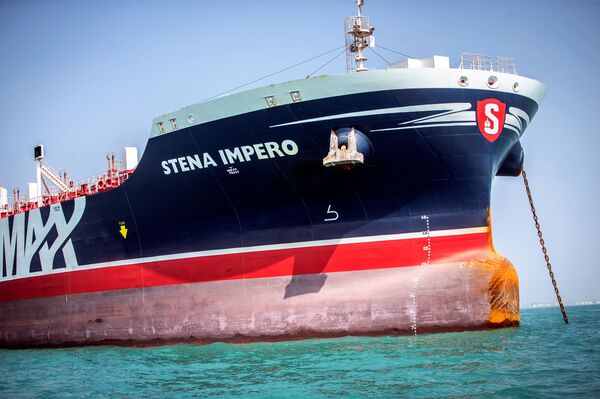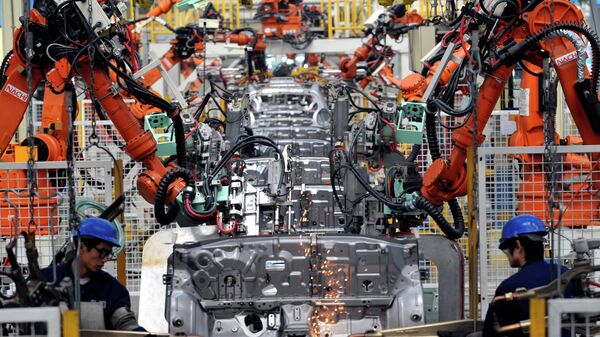Concerns over the security of the vital Hormuz Strait as a key economic route include not only fears over the energy resources which pass through it, but other exports, including aluminium and petrochemical goods, according to an analysis by Japan’s Nikkei Asian Review.
According to the newspaper, the supply of non-energy resources coming from Persian Gulf-adjacent states has grown considerably in recent years, with an estimated 16 percent of the world’s total aluminium output produced in the region.
Furthermore, regional petrochemical output, including ethylene, a plant hormone used for farming across Asia, has grown steadily, with China alone importing $9.4 billion of ethylene from countries in the Middle East in 2018, up from imports of just $1.4 billion a decade earlier. According to Nikkei, Iran, Saudi Arabia, the United Arab Emirates and other regional producers account for some 45 percent of China’s total ethylene imports.
A similar situation has been noted in Malaysia and Singapore, whinch depend on Saudi Arabia for 50 and 75 percent of their ethylene imports, respectively.

The same is true for other petrochemical products, including ammonia, which is used for a variety of pharmaceutical and cleaning products, in fertilisers, refrigeration, the textile industry, and more. India is estimated to depend on Middle Eastern suppliers for a whopping 70-80 percent of its ammonia imports.
According to Nikkei, the longer the Hormuz Strait crisis continues, the more damage will be caused to Middle Eastern producers of these and other products, with Asian buyers expected to seek out alternative suppliers.
Continued imports will have another cost as well, the business newspaper noted, pointing to climbing insurance costs for commercial ships transiting through the Hormuz Strait, with growing rates meaning an increase in prices at both the producer and consumer level.

Hormuz Crisis
Tensions between Iran and the US and its allies in the Strait of Hormuz began to escalate in the spring, following a series of suspected sabotage attacks off the coast of the United Arab Emirates in mid-May. Two more tankers, including one belonging to Japan, were struck in mid-June, in the midst of Japanese Prime Minister Shinzo Abe’s visit to Tehran to try to soothe US-Iran tensions. The US, which announced that it would be deploying a carrier strike group to the Middle East about two weeks before the May attacks, blamed Iran for the sabotage. Tehran shot back, calling the attacks “suspicious” and accusing the US and its allies of deliberately exacerbating tensions.
In June, Iran shot down a $130 million US spy drone, prompting the Trump administration to consider air strikes against targets throughout Iran before canceling at the last minute. The Pentagon later reported that the US Navy had shot down several Iranian drones acting erratically near US warships in the Strait. Iran denied the reports, saying all its drones had been accounted for.
In July, tensions were exacerbated further after Iran’s Revolutionary Guards seized a British-flagged tanker in the Strait of Hormuz, accusing it of slamming into and sinking an Iranian fishing boat. The seizure followed the detention of the Iranian tanker off Gibraltar. London responded to the seizure by announcing the formation of a European-led naval coalition in the Persian Gulf, but later dropped the idea in favour of a US-led mission. Tehran has repeatedly warned countries from outside the region to stay out of the Gulf, insisting that local states have the necessary resources to ensure the safety and freedom of navigation of commercial vessels in the body of water.

Asian powers including China have showed concerns over the escalating tensions in the Gulf, with China’s envoy to Iran recently accusing the US of “bullying measures” against Tehran, while India announced last week that it would not take any military measures to ensure the security of its commercial ships in the strait.
On Saturday, a day after US Secretary of State Mike Pompeo blamed Iran for a Yemeni militia’s attacks on Saudi oil facility, while a senior US senator called on the US to bomb the country, Revolutionary Guards Corps Aerospace Chief Force Chief Amirali Hajizadeh issued a warning to US forces, reminding Washington that “all American bases and their aircraft carriers, at a distance of up to 2,000 kilometers around Iran,” were “within range of our missiles.” Iran denied any involvement in the Houthi drone attacks, claiming US policy against Tehran has shifted from one of “maximum pressure” to a “maximum lie”.



